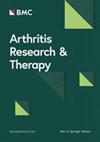巨细胞动脉炎患者的年龄、红细胞分布宽度与 180 天和 1 年死亡率之间的关系:队列研究中的中介分析和机器学习
IF 4.9
2区 医学
Q1 Medicine
引用次数: 0
摘要
本研究的目的是探讨住院或ICU收治的巨细胞动脉炎(GCA)患者的年龄、红细胞分布宽度(RDW)水平与180天和1年死亡率之间的相关性。从MIMIC-IV(3.0)数据库中提取GCA患者的临床数据。采用Logistic和Cox回归分析、Kaplan-Meier (KM)生存分析、限制性三次样条(RCS)分析和中介效应分析探讨年龄、RDW水平与住院或入住ICU的GCA患者180天和1年死亡率之间的关系。使用机器学习算法构建预测模型,并应用SHapley加性解释(SHAP)分析来评估该患者群体中年龄和RDW水平对死亡率的贡献。共有228例GCA患者符合分析条件。我们的研究发现,年龄和RDW水平(均为OR bbb1, p1, P < 0.05)也成为该患者群体180天和1年死亡率的预后危险因素。KM生存分析进一步显示,年龄较大或RDW水平升高的住院或入住ICU的GCA患者的生存率明显低于年轻患者或RDW水平较低的患者(P < 0.0001)。此外,RCS分析显示,RDW水平(阈值:17.53%)与该人群1年死亡率之间存在强烈的非线性关系。此外,RDW水平被发现适度调节年龄(每10年增加)与住院或ICU住院的GCA患者180天或1年死亡率之间的关系。机器学习分析结果表明,使用随机森林算法建立的模型表现最好,曲线下面积为0.879。此外,SHAP分析显示,年龄和RDW水平对住院或入住ICU的GCA患者的死亡率预测有重要贡献。年龄较大和较高的RDW水平被确定为住院或入住ICU的GCA患者180天和1年死亡率增加的独立危险因素。此外,在该患者群体中,RDW水平升高适度调节了年龄与180天或1年死亡率之间的关系。本文章由计算机程序翻译,如有差异,请以英文原文为准。
Associations between age, red cell distribution width and 180-day and 1-year mortality in giant cell arteritis patients: mediation analyses and machine learning in a cohort study
The aim of this study was to investigate the correlation between age, red cell distribution width (RDW) levels, and 180-day and 1-year mortality in giant cell arteritis (GCA) patients hospitalized or admitted to the ICU. Clinical data from GCA patients were extracted from the MIMIC-IV (3.0) database. Logistic and Cox regression analyses, Kaplan–Meier (KM) survival analysis, restricted cubic spline (RCS) analysis, and mediation effect analysis were employed to investigate the association between age, RDW levels, and 180-day and 1-year mortality in GCA patients hospitalized or admitted to the ICU. Predictive models were constructed using machine learning algorithms, and SHapley Additive exPlanations (SHAP) analysis was applied to evaluate the contributions of age and RDW levels to mortality in this patient population. A total of 228 GCA patients were eligible for analysis. Our study identified both age and RDW levels (both with OR > 1, P < 0.05) as significant predictors of 180-day and 1-year mortality in GCA patients hospitalized or admitted to the ICU using multivariate logistic regression analysis. In multivariate Cox regression analysis, both age and RDW (both with HR > 1, P < 0.05) also emerged as prognostic risk factors for 180-day and 1-year mortality in this patient population. KM survival analysis further showed that GCA patients hospitalized or admitted to the ICU with higher age or elevated RDW levels had significantly lower survival rates compared to younger patients or those with lower RDW levels (P < 0.0001). Moreover, RCS analysis indicated a strong nonlinear relationship between RDW levels (threshold: 17.53%) and 1-year mortality in this population. Additionally, RDW levels were found to modestly mediate the relationship between age (per 10-year increase) and 180-day or 1-year mortality in GCA patients hospitalized or admitted to the ICU. The results of the machine learning analysis indicated that the model built using the random forest algorithm performed the best, with an area under the curve of 0.879. Furthermore, SHAP analysis revealed that both age and RDW levels made significant contributions to the prediction of mortality in GCA patients hospitalized or admitted to the ICU. Older age and higher RDW levels were identified as independent risk factors for increased 180-day and 1-year mortality in GCA patients hospitalized or admitted to the ICU. Furthermore, elevated RDW levels modestly mediated the relationship between age and 180-day or 1-year mortality in this patient population.
求助全文
通过发布文献求助,成功后即可免费获取论文全文。
去求助
来源期刊

Arthritis Research & Therapy
RHEUMATOLOGY-
CiteScore
8.60
自引率
2.00%
发文量
261
审稿时长
14 weeks
期刊介绍:
Established in 1999, Arthritis Research and Therapy is an international, open access, peer-reviewed journal, publishing original articles in the area of musculoskeletal research and therapy as well as, reviews, commentaries and reports. A major focus of the journal is on the immunologic processes leading to inflammation, damage and repair as they relate to autoimmune rheumatic and musculoskeletal conditions, and which inform the translation of this knowledge into advances in clinical care. Original basic, translational and clinical research is considered for publication along with results of early and late phase therapeutic trials, especially as they pertain to the underpinning science that informs clinical observations in interventional studies.
 求助内容:
求助内容: 应助结果提醒方式:
应助结果提醒方式:


